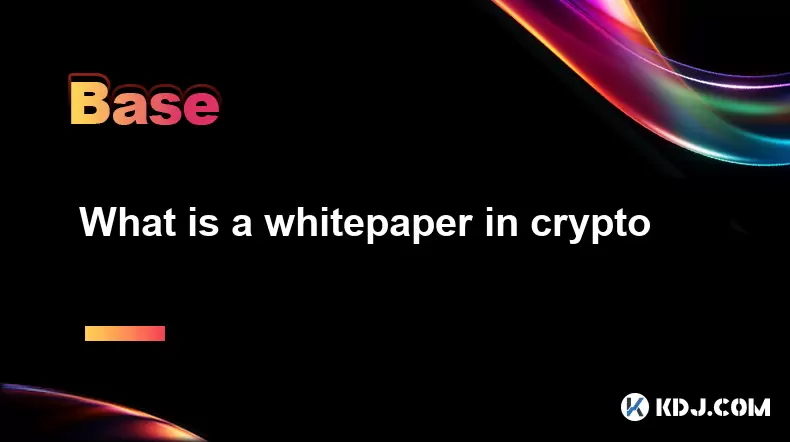-
 Bitcoin
Bitcoin $122,073.8475
3.61% -
 Ethereum
Ethereum $3,073.2823
4.14% -
 XRP
XRP $2.9894
7.25% -
 Tether USDt
Tether USDt $1.0000
-0.03% -
 BNB
BNB $703.4664
1.92% -
 Solana
Solana $167.3788
3.42% -
 USDC
USDC $0.9998
-0.01% -
 Dogecoin
Dogecoin $0.2073
5.10% -
 TRON
TRON $0.3022
0.10% -
 Cardano
Cardano $0.7550
3.34% -
 Hyperliquid
Hyperliquid $48.6208
1.34% -
 Stellar
Stellar $0.4636
8.25% -
 Sui
Sui $3.9823
16.03% -
 Chainlink
Chainlink $16.2336
5.75% -
 Hedera
Hedera $0.2450
6.76% -
 Bitcoin Cash
Bitcoin Cash $516.7712
2.70% -
 Avalanche
Avalanche $21.8700
3.18% -
 UNUS SED LEO
UNUS SED LEO $9.0253
-0.08% -
 Shiba Inu
Shiba Inu $0.0...01385
5.42% -
 Toncoin
Toncoin $3.0240
0.80% -
 Litecoin
Litecoin $97.7055
3.39% -
 Polkadot
Polkadot $4.1356
4.42% -
 Monero
Monero $351.1108
4.78% -
 Uniswap
Uniswap $9.3536
11.12% -
 Dai
Dai $0.9998
-0.01% -
 Ethena USDe
Ethena USDe $1.0005
0.01% -
 Pepe
Pepe $0.0...01264
4.17% -
 Bitget Token
Bitget Token $4.5002
3.13% -
 Aave
Aave $330.6527
9.15% -
 Bittensor
Bittensor $420.6946
7.83%
What is a whitepaper in crypto
A well-written crypto whitepaper outlines a project's vision, technology, and roadmap, helping investors evaluate its potential and legitimacy.
Jul 12, 2025 at 05:07 am

Understanding the Role of a Whitepaper in Cryptocurrency
A whitepaper is a foundational document in the cryptocurrency space that outlines the vision, technology, and roadmap of a blockchain project. It serves as both a technical blueprint and a persuasive tool to attract investors, developers, and users. The whitepaper typically explains the problem the project aims to solve, the proposed solution, the underlying technology, tokenomics, and development plans.
In most cases, a whitepaper is released before a project launches its token sale or initial coin offering (ICO). It allows potential stakeholders to evaluate the feasibility and innovation behind the project. A well-crafted whitepaper can significantly influence investor confidence and community engagement.
Whitepapers are not just marketing tools; they are technical documents that showcase the depth of understanding and planning by the development team.
Key Components of a Crypto Whitepaper
Crypto whitepapers vary in structure depending on the complexity of the project, but they generally include several standard sections:
- Abstract or Executive Summary: Provides a concise overview of the project’s goals and value proposition.
- Problem Statement: Clearly defines the real-world issue or inefficiency the blockchain project intends to address.
- Solution Overview: Introduces the proposed blockchain-based solution and how it differs from existing systems.
- Technical Details: Includes consensus mechanisms, cryptographic methods, smart contract logic, and network architecture.
- Tokenomics: Describes the token supply, distribution model, use cases, and economic incentives for participants.
- Roadmap: Outlines key milestones, development phases, and future updates planned for the project.
Each section plays a crucial role in helping readers understand the scope and seriousness of the project.
The Importance of Reading a Whitepaper Before Investing
Before investing in any cryptocurrency or blockchain project, it's essential to read its whitepaper thoroughly. This document provides insight into whether the project has a solid foundation, a clear use case, and realistic goals.
Many fraudulent or poorly designed projects lack detailed whitepapers or copy content from other successful projects. A genuine whitepaper demonstrates transparency and helps investors assess risks and potential returns.
Investors who skip reading the whitepaper may miss critical red flags or misunderstand the core functionality of the token or platform.
Differences Between a Whitepaper and Other Project Documents
While the whitepaper is the primary document used to explain a blockchain project, there are other supporting documents that serve different purposes:
- Litepaper: A condensed version of the whitepaper, often used to introduce the project quickly to a broader audience.
- Technical Paper: Focuses exclusively on the technical aspects, such as cryptographic algorithms or consensus protocols.
- Business Plan: Emphasizes market opportunities, revenue models, and business strategies rather than technical details.
These documents complement the whitepaper but cannot replace it when evaluating the legitimacy and technical soundness of a project.
How to Read and Analyze a Crypto Whitepaper Effectively
Reading a crypto whitepaper requires attention to detail and a basic understanding of blockchain technology. Here’s how to approach it effectively:
- Start with the Problem Statement: Determine if the problem being addressed is real and significant.
- Examine the Proposed Solution: Assess whether the blockchain-based solution is necessary and adds value over traditional methods.
- Scrutinize the Tokenomics Section: Look at token supply caps, inflation rates, and allocation percentages for team members, advisors, and early investors.
- Check for Technical Depth: A credible whitepaper includes technical diagrams, code references, or links to open-source repositories.
- Verify the Team and Advisors: Legitimate whitepapers list the names, backgrounds, and LinkedIn profiles of the core team and advisors.
- Look for Roadmaps and Milestones: A clear timeline indicates planning and commitment from the development team.
By following these steps, readers can better judge the viability and seriousness of a crypto project.
Common Red Flags in Crypto Whitepapers
Not all whitepapers are created equal. Some contain misleading or vague information that should raise concerns among potential investors:
- Lack of Technical Detail: If the whitepaper avoids explaining how the technology works, it may be hiding weaknesses.
- Vague Use Cases: Projects that claim their blockchain will "change everything" without specific applications are often suspicious.
- Anonymous Teams: While some legitimate projects have anonymous founders, this should prompt further due diligence.
- Unrealistic Promises: Claims of guaranteed high returns or revolutionary breakthroughs without evidence are warning signs.
- Copy-Pasted Content: Reusing text or diagrams from other whitepapers is a strong indicator of plagiarism and lack of originality.
Recognizing these red flags can help avoid scams and poorly structured projects.
Frequently Asked Questions (FAQs)
Q1: Can a whitepaper be updated after the project launch?
Yes, many blockchain projects update their whitepapers to reflect changes in technology, tokenomics, or strategic direction. These updates are usually announced publicly and shared through official channels like GitHub or the project’s website.
Q2: Are whitepapers legally binding documents?
No, whitepapers are not legal contracts or binding agreements. They serve as informational and promotional materials. However, misleading claims in a whitepaper could lead to legal scrutiny, especially during regulatory investigations.
Q3: Do all blockchain projects publish whitepapers?
While most serious blockchain projects release whitepapers, some choose alternative formats like litepapers or blog posts. However, the absence of a whitepaper can be a red flag, especially for projects seeking public investment.
Q4: Where can I find reliable whitepapers?
Reliable whitepapers are typically hosted on official websites, GitHub repositories, or platforms like CoinMarketCap and CoinGecko. Always verify the source and cross-check information with community forums and social media channels.
Disclaimer:info@kdj.com
The information provided is not trading advice. kdj.com does not assume any responsibility for any investments made based on the information provided in this article. Cryptocurrencies are highly volatile and it is highly recommended that you invest with caution after thorough research!
If you believe that the content used on this website infringes your copyright, please contact us immediately (info@kdj.com) and we will delete it promptly.
- Meme Coin Mania: Your Step-by-Step Guide to Viral Success in 2025
- 2025-07-14 18:00:36
- UK Treasury Watch: Bitcoin Surge Lifts Companies Amidst Crypto Optimism
- 2025-07-14 16:30:12
- Crypto Investment Beyond XRP: Unearthing High-Potential Substitutes
- 2025-07-14 18:10:12
- Satoshi Nakamoto: Bitcoin's Billionaire Mystery – Richest Person?
- 2025-07-14 16:50:12
- Solana, Little Pepe, Meme Coin Mania: What's the Hype?
- 2025-07-14 18:00:36
- Bitcoin Privacy, Cryptocurrency, and Cake Wallet: A New Yorker's Take
- 2025-07-14 18:10:12
Related knowledge

What is the Bitcoin dominance index
Jul 12,2025 at 10:35pm
Understanding the Bitcoin Dominance IndexThe Bitcoin Dominance Index, often abbreviated as BTC.D, is a metric used to measure Bitcoin's market capital...

What is the Bitcoin dominance index
Jul 11,2025 at 04:29am
What is the Bitcoin Dominance Index?The Bitcoin Dominance Index is a metric used to gauge Bitcoin's market capitalization relative to the total market...

Can crypto be a hedge against inflation
Jul 14,2025 at 12:21am
Understanding the Concept of Hedging Against InflationInflation refers to the general increase in prices and fall in the purchasing value of money ove...

Can crypto be a hedge against inflation
Jul 12,2025 at 12:07pm
Understanding the Role of Blockchain in Decentralized Finance (DeFi)Blockchain technology serves as the backbone of decentralized finance, offering a ...

What are account abstraction wallets
Jul 13,2025 at 01:43am
Understanding the Concept of Account AbstractionAccount abstraction is a term frequently used in the Ethereum ecosystem, particularly within discussio...

What does "gas limit" vs "gas price" mean
Jul 13,2025 at 04:00am
Understanding the Basics of Gas in Blockchain TransactionsIn the Ethereum and other EVM-compatible blockchains, every transaction requires computation...

What is the Bitcoin dominance index
Jul 12,2025 at 10:35pm
Understanding the Bitcoin Dominance IndexThe Bitcoin Dominance Index, often abbreviated as BTC.D, is a metric used to measure Bitcoin's market capital...

What is the Bitcoin dominance index
Jul 11,2025 at 04:29am
What is the Bitcoin Dominance Index?The Bitcoin Dominance Index is a metric used to gauge Bitcoin's market capitalization relative to the total market...

Can crypto be a hedge against inflation
Jul 14,2025 at 12:21am
Understanding the Concept of Hedging Against InflationInflation refers to the general increase in prices and fall in the purchasing value of money ove...

Can crypto be a hedge against inflation
Jul 12,2025 at 12:07pm
Understanding the Role of Blockchain in Decentralized Finance (DeFi)Blockchain technology serves as the backbone of decentralized finance, offering a ...

What are account abstraction wallets
Jul 13,2025 at 01:43am
Understanding the Concept of Account AbstractionAccount abstraction is a term frequently used in the Ethereum ecosystem, particularly within discussio...

What does "gas limit" vs "gas price" mean
Jul 13,2025 at 04:00am
Understanding the Basics of Gas in Blockchain TransactionsIn the Ethereum and other EVM-compatible blockchains, every transaction requires computation...
See all articles

























































































